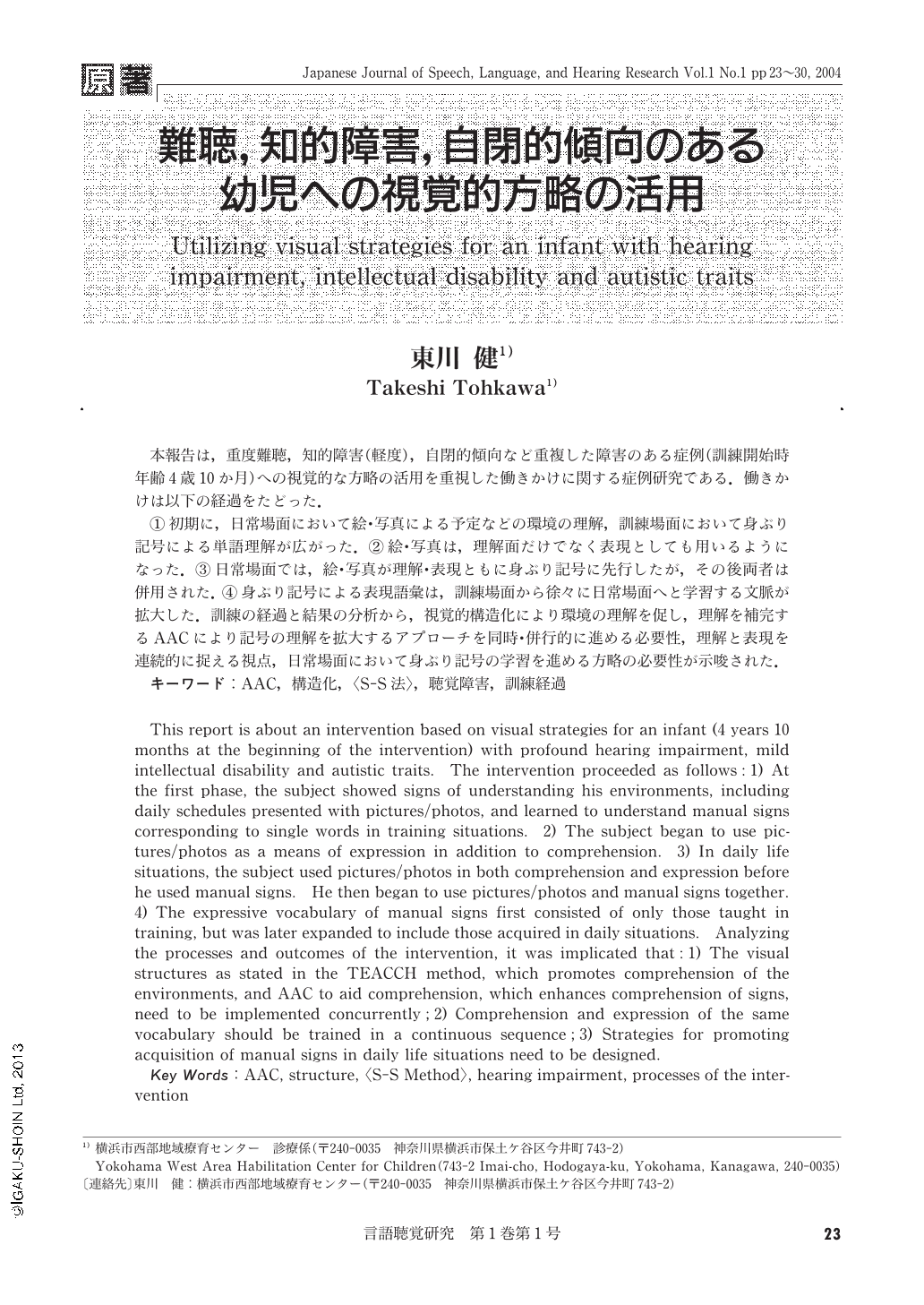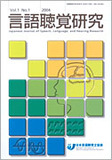Japanese
English
- 有料閲覧
- Abstract 文献概要
- 1ページ目 Look Inside
- 参考文献 Reference
本報告は,重度難聴,知的障害(軽度),自閉的傾向など重複した障害のある症例(訓練開始時年齢4歳10か月)への視覚的な方略の活用を重視した働きかけに関する症例研究である.働きかけは以下の経過をたどった.
①初期に,日常場面において絵・写真による予定などの環境の理解,訓練場面において身ぶり記号による単語理解が広がった.②絵・写真は,理解面だけでなく表現としても用いるようになった.③日常場面では,絵・写真が理解・表現ともに身ぶり記号に先行したが,その後両者は併用された.④身ぶり記号による表現語彙は,訓練場面から徐々に日常場面へと学習する文脈が拡大した.訓練の経過と結果の分析から,視覚的構造化により環境の理解を促し,理解を補完するAACにより記号の理解を拡大するアプローチを同時・併行的に進める必要性,理解と表現を連続的に捉える視点,日常場面において身ぶり記号の学習を進める方略の必要性が示唆された.
This report is about an intervention based on visual strategies for an infant (4 years 10 months at the beginning of the intervention) with profound hearing impairment, mild intellectual disability and autistic traits. The intervention proceeded as follows:1) At the first phase, the subject showed signs of understanding his environments, including daily schedules presented with pictures/photos, and learned to understand manual signs corresponding to single words in training situations. 2) The subject began to use pictures/photos as a means of expression in addition to comprehension. 3) In daily life situations, the subject used pictures/photos in both comprehension and expression before he used manual signs. He then began to use pictures/photos and manual signs together. 4) The expressive vocabulary of manual signs first consisted of only those taught in training, but was later expanded to include those acquired in daily situations. Analyzing the processes and outcomes of the intervention, it was implicated that:1) The visual structures as stated in the TEACCH method, which promotes comprehension of the environments, and AAC to aid comprehension, which enhances comprehension of signs, need to be implemented concurrently;2) Comprehension and expression of the same vocabulary should be trained in a continuous sequence;3) Strategies for promoting acquisition of manual signs in daily life situations need to be designed.

Copyright © 2004, Japanese Association of Speech-Language-Hearing Therapists. All rights reserved.


